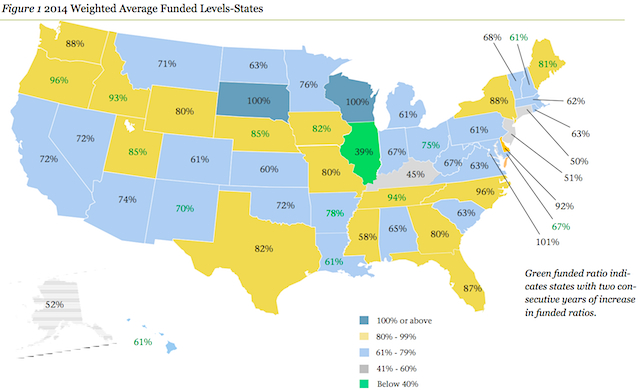 Art by Lauren TamakiWhen an industry’s biggest clients team up and beg a
regulator to make it behave, that industry has a problem. In July, many of
private equity’s largest public-sector investors did exactly that.
Art by Lauren TamakiWhen an industry’s biggest clients team up and beg a
regulator to make it behave, that industry has a problem. In July, many of
private equity’s largest public-sector investors did exactly that.
“Complexity,
combined with a lack of industry disclosure best practices, has led to an
uneven playing field for state fiduciaries seeking to report private equity
fees fully,” wrote comptrollers and treasurers representing pension funds in
New York, California, Virginia, and others in an open letter to the US
Securities and Exchange Commission. The CIO of the California Public Employees’
Retirement System has also launched an investigation into the fund’s $29
billion private equity portfolio and its relationships with almost 300
managers.
The ultimate
goal? Alignment of interest. But actually achieving this will be difficult…
if it’s even possible.
“It’s a myth, a
unicorn,” says Ashby Monk of Stanford University’s Global Projects Center. “The
industry is so tilted in favor of general partners. There is information
asymmetry. But the hope is to build meaningful partnerships allocating to high
conviction investments with lower fees.” In a series of papers, Monk claims
managers enjoy a “disproportionate amount of power relative to the value-add in
these illiquid markets” with these values “captured by the managers rather than
flowing through to the asset owners that back them.” Investors may inch closer
to alignment if they engage in long-term relationships with a single private
equity manager… but that’s still a big ‘if’, Monk says.
One public
pension fund argues that it has achieved the impossible.
Nearly four
years have passed since the New Jersey Division of Investment inked its
strategic relationship with Blackstone—initially committing upwards of $1.8
billion—but investment chief Chris McDonough says the deal is still in the
honeymoon phase. “Performance has been great, though some of the mandates are
younger and newer than others, so it wouldn’t be appropriate to call it a
complete success yet.” Records show Blackstone’s tactical opportunity fund grew
significantly since inception, posting an internal rate of return in excess of
20% after fees.
“This is only going to work if both parties are committed and dedicated to each other. From our standpoint, Blackstone has done that.”
“We call it a
strategic relationship, not a partnership. We use the relationship as an
extension of our staff. There is only so much we can do with limited resources
and manpower,” then-Director Tim Walsh said months after striking the deal.
Negotiated terms include 0% fees on committed capital, incentive fees based on
return projections—seemingly in favor of the $79 billion pension—and unfettered
access to Blackstone’s talent and knowledge, according to Walsh.
McDonough says
he and his staff are able to meet or talk with Blackstone’s team at least
weekly, if not more, for general updates or deal-specific discussions. They
have access to specialists and generalists, including expertise unrelated to
the assets in their partnership. “For example, we’re expecting someone from
Blackstone to come to our offices to talk to us about what they’re seeing in
mortgage origination,” the director says, declaring the external resources
“pretty invaluable.”
“The
relationship”—like any marriage—“is a two-way street,” he adds. “It’s
about the time and resources devoted to each
partner. This is only going to work if both parties are committed and dedicated
to each other. From our standpoint, Blackstone has done that.”
Having found a keeper—and a potential Holy Grail
in private equity investing—New Jersey has decided to commit even more. In
January, the fund expanded its relationship with Blackstone, adding up to $1.05
billion and allocating to existing funds as well as new real estate separate
accounts.
“The division
has an almost 10-year history of successfully investing with Blackstone,”
McDonough said in a statement. It “has also been able to leverage the strategic
relationship to produce significant fee savings and use the firm’s resources to
assist in broader portfolio management.”
Speaking of assisting one’s
partner, one major state was conspicuously absent from this summer’s plea for
private equity regulation: New Jersey.
 Source: Loop Capital Markets
Source: Loop Capital Markets
 Art by Lauren Tamaki
Art by Lauren Tamaki